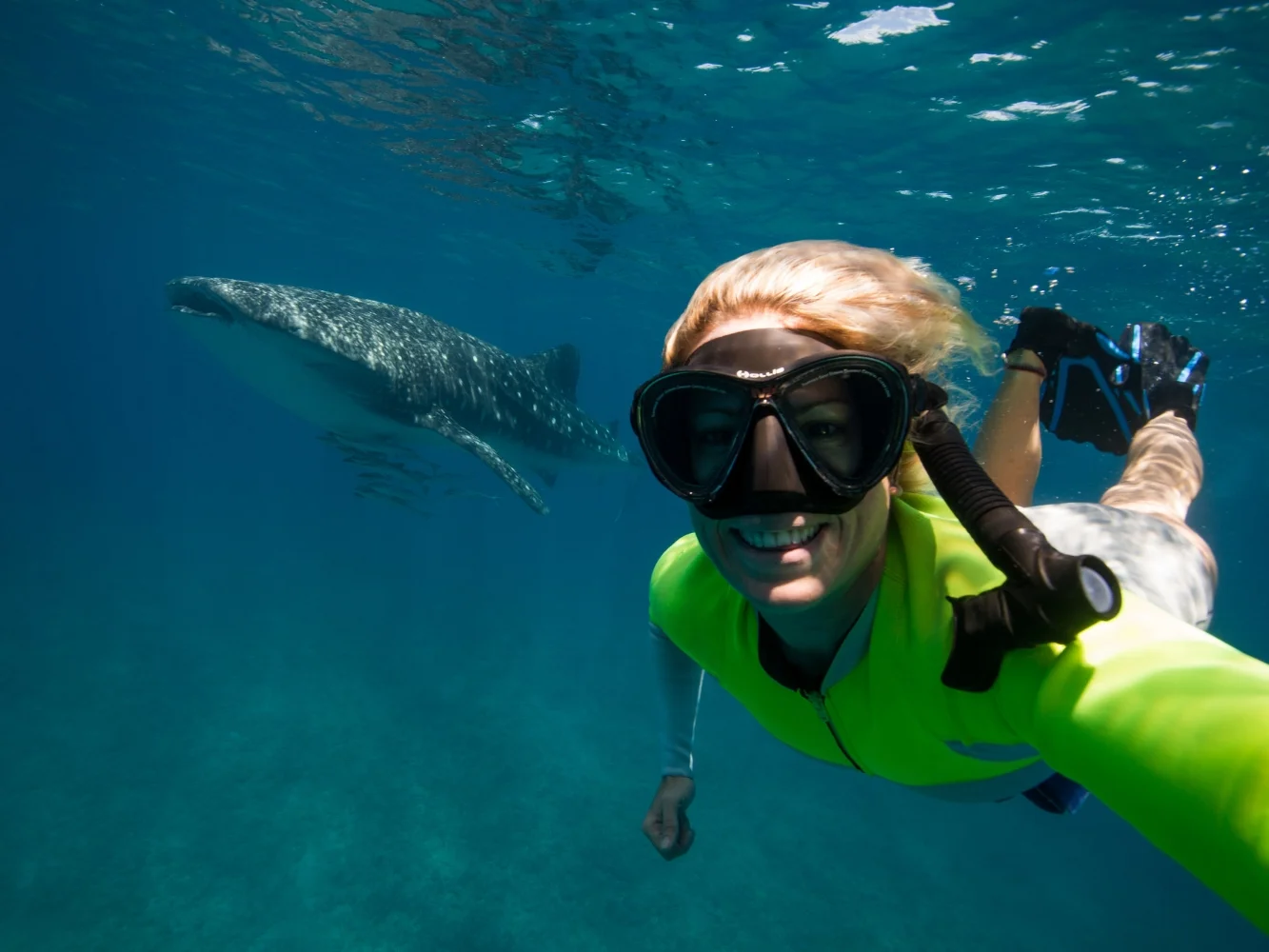From the African savannah to the vast stretches of wilderness on Canada’s rocky coastline, nothing beats the thrill of being breathtakingly close to some of the world’s most incredible wildlife. From birdwatching to bear watching we believe in responsible, sustainable tourism that inspires, educates and connects travellers with amazing landscapes and wildlife.
RWANDA - FOR GORILLAS
Coming face to face with mountain gorillas in their natural habitat is a once in a lifetime experience. With almost half of the gorilla population living in Rwanda’s Volcanoes National Park it’s no wonder this ultimate wildlife encounter is the country’s biggest attraction, and perhaps the best destination in Africa for tracking them. Sabyinyo Silverback Lodge is in prime position for seeing the gorillas – being closest to the forest - at the foothills of the Virunga Mountains, a traditional lodge with creature comforts and personal touches. More recently Bisate Lodge opened its doors under the Wilderness umbrella in late June 2017, boasting views out over the distant Bisoke, Karisbimbi and Mikeno volcanoes. This luxurious eco-lodge aims to provide guests with more than just a one-stop gorilla experience, instead immersing you into the local atmosphere, giving you a greater understanding of the conservation work that helps to protect the gorillas, eco-systems and the local community. With just six forest villas spaced across the large but private Bisate site, you will feel as though you are actually staying within the national park itself. Conservation plays an important role in local tourism and there is a strong ethos of preservation of rare primates – whilst gorilla permits are expensive at $1,500 per person in Rwanda it’s rewarding to know that you are reinforcing the good work of the local organisations by contributing to parks fees and permits. In recent years mountain gorilla populations have shown positive trends that give hope for the future, central to this success is the country’s ability to sustain a local economy of which eco-tourism is at the very heart.
AUSTRALIA - FOR WHALE SHARKS
Stretching for 280kms along Australia’s west coast, the World Heritage Ningaloo Reef is the world’s longest fringing coastal reef and remains one of Australia’s best kept natural secrets. Unlike the Great Barrier Reef, at luxury tented camp Sal Salis Ningaloo Reef the house reef is no more than 100m offshore which means the coral is within swimming distance of the beach. There are over 500 species of fish and 250 coral species to be seen and turtles can be seen daily in front of the camp (go for a snorkel at 'turtle holes') and the guides are knowledgeable and passionate. But the main drawcard here is that Sal Salis is one of just a few operators in Western Australia to be granted a licence allowing the camp to take guests on a private charter to swim with whale sharks as the slow-moving, gentle, filter-feeding giants migrate past the Ningaloo Reef. Guests head out for an exhilarating day-long experience aboard the camp boat which caters for just ten guests - the maximum number of swimmers allowed with the whale sharks at any one time - along with an expert guide, delicious lunch, drinks and snorkelling equipment included on board. As they continually move, swimming is required during the interaction, so you need to be a relatively confident swimmer, able to snorkel and swim freestyle. Whale Shark swims generally operate between April –July.
INDIA - FOR TIGERS
Tigers are critically endangered with only around 3,200 animals left in the wild, with 3 subspecies already extinct (Javan, Balinese, Caspian Tiger). Bengal tigers are the most common subspecies of tiger and live in India, becoming a huge part of their tradition and lore over time, but hunting and deforestation have reduced the population dramatically. Ranthambhore National Park in Rajasthan, the former hunting ground of the Maharaja of Jaipur, is the best place to spot Bengal tigers in the wild. One of the best places to stay here is Sher Bagh - a tented camp bordering Ranthambore National Park whose suites evoke classic safari camp romance and come with outdoor showers and jacuzzi baths. While Sher Bagh’s property and guest tents are world-class, its real drawcard is the calibre of the safari guides - Sher Bagh employs some of the most experienced and talented guides in all of India. Run by the Forest Department of the Government of India, the park can be difficult to access and navigate (there are 10 zones and certain zones are much better for seeing tigers than others) but thanks to the experience of the Sher Bagh guides, in terms of both tracking the tigers and securing access the best zones in the park, you’re likely to be rewarded. And whilst a tiger spot is the ultimate animal sighting, there is plenty else to see including leopards, striped hyena, sambar deer and sloth bear. The park also offers some stunning landscapes, with lakes, forests and rocky outcrops, and the ruins of the 10th century Ranthambore Fort. If budget allows, opt for a private jeep experience, versus a group car for your game drives - the relative price increase is worth the personalised experience.
MADAGASCAR - FOR LEMURS
Separated from Africa mainland some 165 million years ago, the wildlife of Madagascar is both bizarre and wonderful. Named the ‘8th’ continent due to its biodiversity and with almost 90% of Madagascar’s wildlife (and plant life) being endemic the island offers wildlife encounters like no other. Lemurs are found only in Madagascar, some are adapted to live in spiny forests, and others live in lush jungle - there are over 100 different species of lemur to see and they are all considered endangered. Travel to the Andasibe-Mantadia National Park for a stay at Vakona Forest Lodge to hear the haunting whale-like song of the Indri (the largest of the lemurs, known for their strange wailing song and teddy bear like appearance) echo through the forest, spot birds such Red-fronted coua and Coral-billed nuthatch vanga, and 'herps' including Mossy leaf-tailed gecko and the critically endangered Golden mantella, the area's flagship frog. Wildlife enthusiasts can continue south to Isalo National Park the iconic ring-tailed lemur sitting in large groups amongst the trees, or journey to Tuléar to see the golden furred Verreaux’s Sifaka dancing along the dusty pathways with its comical two-legged hop.
CAN'T FIND WHAT YOU'RE LOOKING FOR?
Whether its swimming alongside a whale shark in Western Australia, glimpsing the flash of a Bengal tiger’s amber eyes through the jungle in India, stepping into a grizzly bear’s footprint in Canada, or walking amongst a herd of elephants in Botswana’s Okavango Delta, our wildlife holidays promise life-changing moments, taking you to environmentally diverse regions where you can experience up-close, personal encounters with rare and endangered animals.


